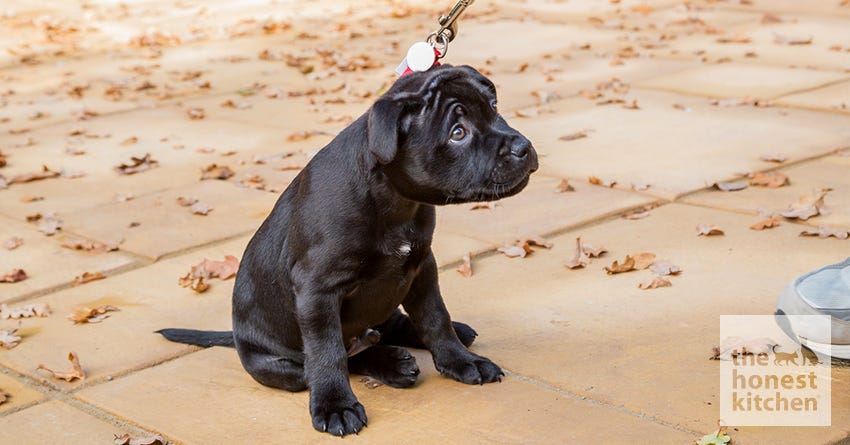Dog Training: Using the Leash for More Than a Walk

Destructive puppies are an unnecessary handful.
If your puppy keeps chewing on everything in sight, there's a simple training technique you can implement: keep him on a leash at home. Restricting his freedom by using his crate at certain times is important. Baby gates across hallways, closing bedroom doors, putting things away, and gaining the cooperation of everyone in the family are all helpful steps as well. But there's one more step you can take to ensure you know what your pup is up to at all times—you guessed it, a leash.A Powerful Tool and Technique
Puppies and young dogs repeat actions that are rewarding to them. Chewing up your shoes, socks, glasses, cell phone, or remote are fun because they smell like you. Grabbing a shoe and dashing around the house while someone chases him is also great fun. Knocking over the kitchen trash can, stealing food, and chasing the family cat are entertaining, too, with built-in rewards. A crate, baby gates, closing doors, and other training techniques are all useful, but one of my favorite ways to teach a puppy (or newly adopted dog) is to use the leash. Since I prefer to prevent unwanted behaviors from occurring rather than deal with problems afterwards, I can do this easily when the puppy is on leash and close to me. By keeping the puppy within leash length, I can also teach him that good things happen when he hangs out with me. Then, too, if he decides to do something I don't want him to do, since he's close I can see what he's doing and can interrupt it before it becomes a problem.Sit on the Leash
I began teaching him to wear a leash when he first came home with me by using a "lure and reward" training technique. Holding the leash with one hand, I'd have treats in the other. Letting Hero smell the treat, I'd take one step backwards and when he'd follow the treat (even one step) I'd raise him and give him the treat. After three or four repetitions I'd stop and play with my puppy while he was still wearing the leash as I want him to think that good things happen when he's got the leash on. Gradually I ask him to follow the treat (and me) for a few more steps. Only when he's happy on the leash, not fighting it, and willingly walking on the leash do I go on to the next training step. When introducing my new puppy to the concept of wearing his leash in the house and being restrained, I began by sitting on his leash. So, with his leash fastened to a soft buckle collar that was snug enough he couldn't pull it over his head, I got myself an ice tea, a book to read, and a chew toy for him. I put half of his leash on my chair and sat down. Giving him his chew toy, I drank my ice tea and read my book. When Hero was quiet and chewing on his toy, I reached down and rubbed an ear or scratched his neck. If he fussed, I ignored him. After five minutes I got up and we walked outside so he could relieve himself. This exercise does several things. First of all, you can relax and do something you want to do without fussing over the puppy. The puppy learns that fighting the leash doesn't gain him anything while being compliant and calm on the leash results in quiet petting from you. He learns to be quiet and calm in the house with you. He learns he doesn't have to be a rowdy puppy. In addition, you aren't restraining him; the leash is. Semantics, I know, but you aren't yanking at the leash, yelling at the puppy, or otherwise reacting. As Hero became used to this exercise, I gradually extended the time. Now, at four months old, we can relax together for half an hour. He can calm himself, relax, and even sleep. The "sit on the leash" technique is not new. It's been used for decades and I've heard it attributed to several different trainers although I believe the late Margot Woods of Applewoods Dog Training in Maryland started using it about 40 years ago. ©istockphoto/cglade
©istockphoto/cglade

